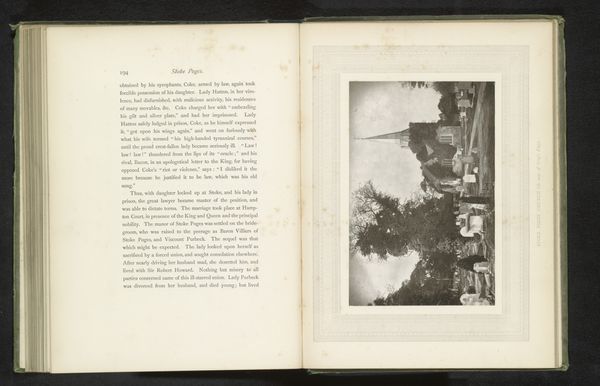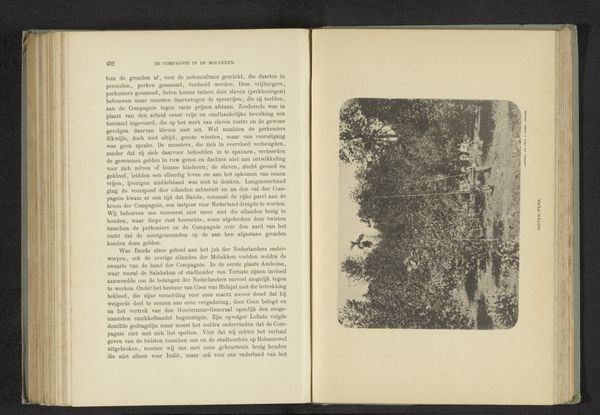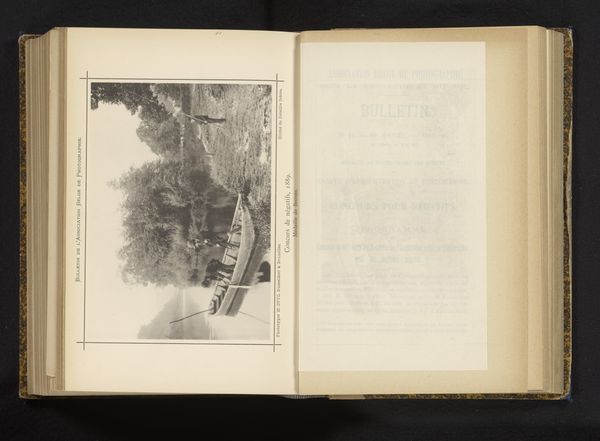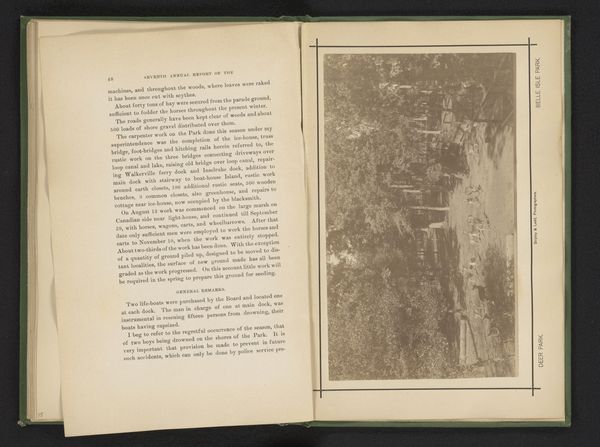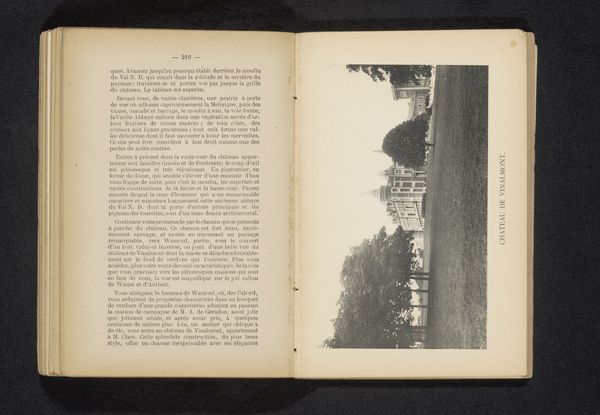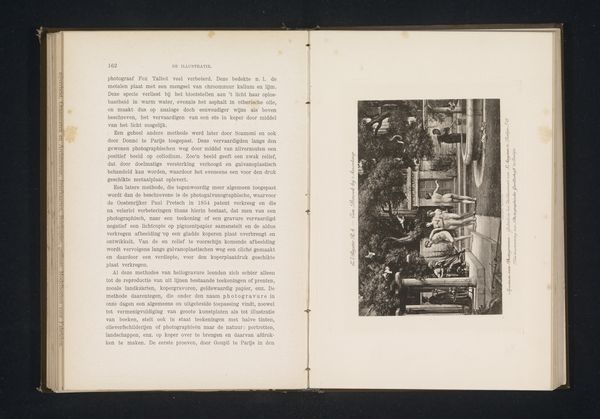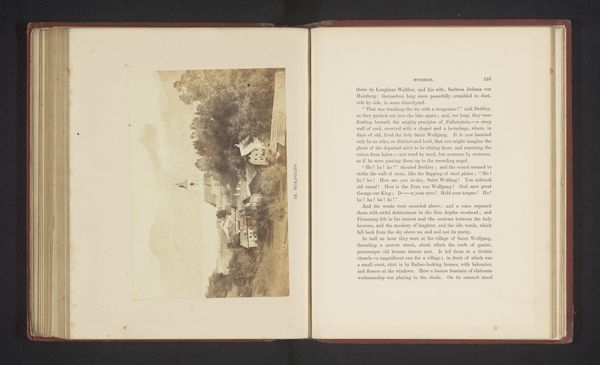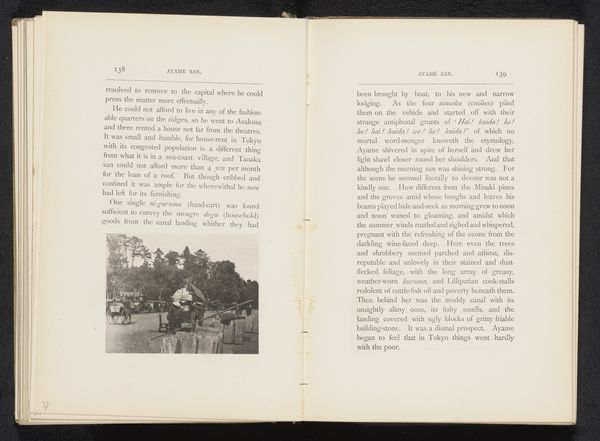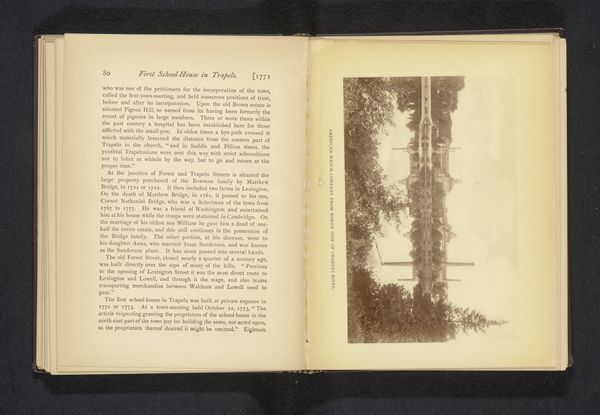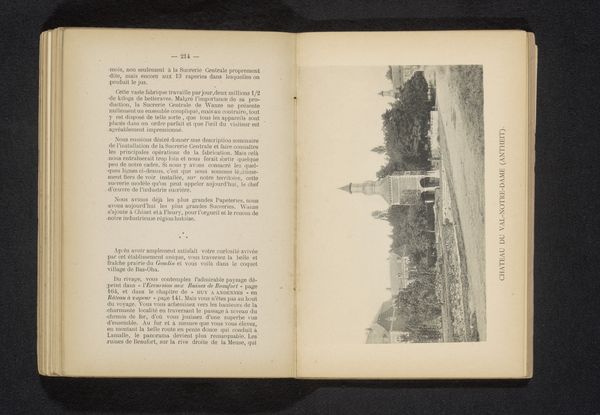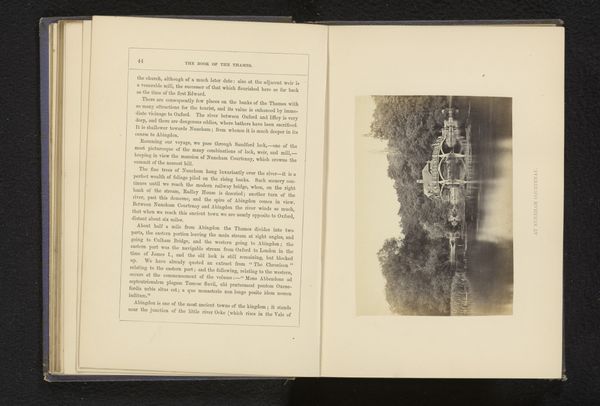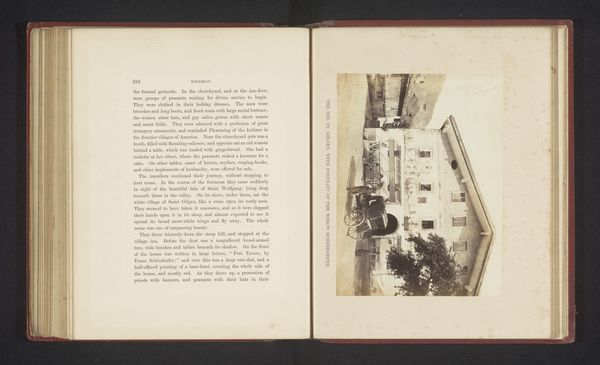
print, photography, albumen-print
# print
#
landscape
#
river
#
photography
#
albumen-print
Dimensions: height 100 mm, width 140 mm
Copyright: Rijks Museum: Open Domain
Editor: Here we have Francis Frith's "View of the Thames at Goring-on-Thames," an albumen print made before 1867. I’m immediately struck by the contrasting textures; the solidity of the architecture versus the gentle ripple of the river, almost still. What do you see when you look at this print? Curator: The composition is meticulously constructed, is it not? Observe how the linear elements – the bridge, the riverbank – create strong horizontals that stabilize the image. Then notice how Frith contrasts the stable horizontals with softer verticality from the overhanging foliage. Editor: Yes, the interplay is beautiful. Does the composition hint at any underlying narrative or idea? Curator: From a purely formal perspective, the buildings and landscape create dynamic tonal relationships that lead the viewer through the composition. Consider the placement of the darker values in relation to the light, how they direct the eye towards the heart of the piece. Are you noticing any repeating patterns in the picture plane? Editor: I see. There is a repetition of the rooflines which guide the viewer. The linear structure really organizes the organic shapes surrounding it. Curator: Precisely. The print skillfully explores the intersection of the constructed and natural environments through variations of value and repetition. It creates its own dialogue through tonal variety and visual organisation, allowing the viewer an aesthetic experience based in perception itself. Editor: So, by carefully studying its formal elements—line, form, value—we discover not just a pretty picture, but an interconnected conversation between structural control and natural expression. Curator: Indeed, it allows us to apprehend an intrinsic truth and appreciate the beautiful nature of pictorial syntax.
Comments
No comments
Be the first to comment and join the conversation on the ultimate creative platform.
